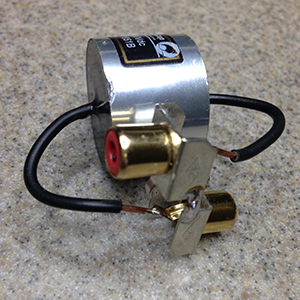Paul Speltz, President of ANTICABLES, Electronic Engineer & High Fidelity Enthusiast shares a new theory he is beginning to test, that the directionality of a cap is similar to wire. Read on…
The past few years ANTICABLES has been working hard on new product development and I have adopted two new sayings to develop by, “The delight is in the details”, and “Everything matters”. I have found that seemingly every conceivable variable makes an audible difference when designing speaker wires, interconnects, and more recently, power cords and USB cords.
As the performance and resolution of a playback system improves, it becomes much quicker to hear these differences, and more importantly, if the change is better, worse, or just different. In other words, did the change bring us closer to, or further from, the music?
In the never ending quest for improving our main reference system, to help us develop better and better sounding products, I have been upgrading the caps on both my large full-range dipole speakers and my 15″ dual concentric speakers. Knowing that “everything matters” and that “the delight is in the details” (of the design), I auditioned each capacitor for proper directionality.
All caps I have tried sound different in one direction over the other. Be aware, it is a bit tricky to do if the caps have not been burned-in, because one needs to be able to disregard the bad sounding dielectric effect distortion, and listen for the directionality characteristics. I can also safely say that given the same cap design, smaller value caps have always sounded better than larger value of the same brand and type.
On both brands I recently tested, there is not consistent directionality from value to value. When looking at the printed label, one value may sound best from left to right. A different value sound better from right to left.
 On to my point. I think there is a common belief that the sonic directionality in capacitors has to do with which lead is terminated to the outermost foil in the cap. My theory is different. I believe the directionality of a cap is similar to directionality in wire, because of similarities in the “backwards” sound between them. It has to do with the non-symmetric grain structure of the conductive metal as it was drawn or formed into shape.
On to my point. I think there is a common belief that the sonic directionality in capacitors has to do with which lead is terminated to the outermost foil in the cap. My theory is different. I believe the directionality of a cap is similar to directionality in wire, because of similarities in the “backwards” sound between them. It has to do with the non-symmetric grain structure of the conductive metal as it was drawn or formed into shape.
ANTICABLES employee Ralph Marquart and I have worked out a procedure that will help prove if this is the case or not. Hopefully, I will be able to give further insight to this topic in an upcoming newsletter, stay tuned!